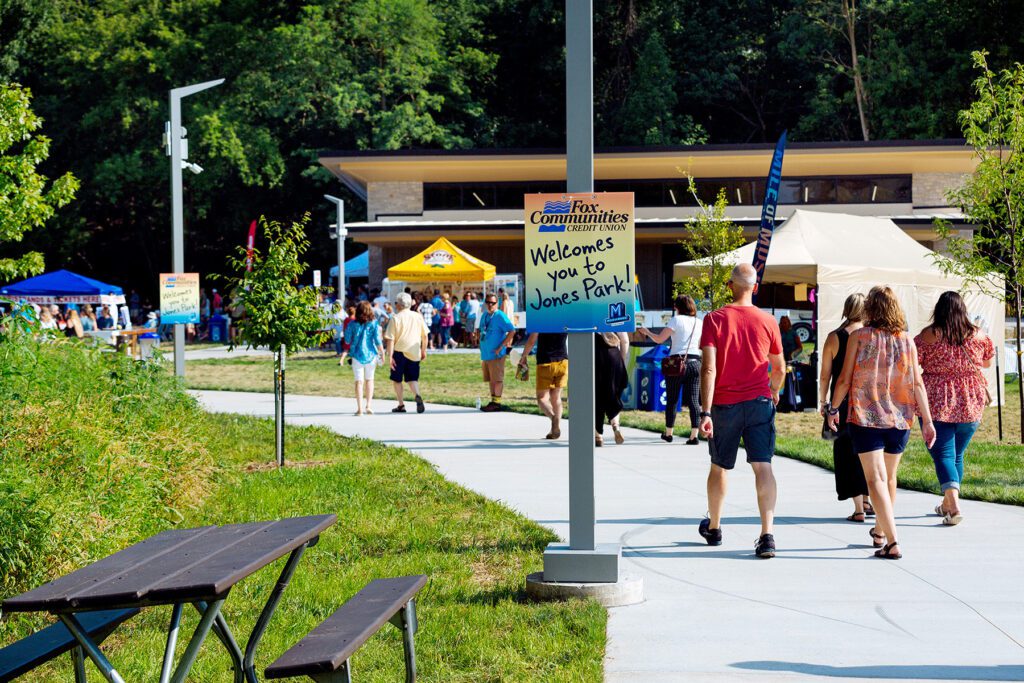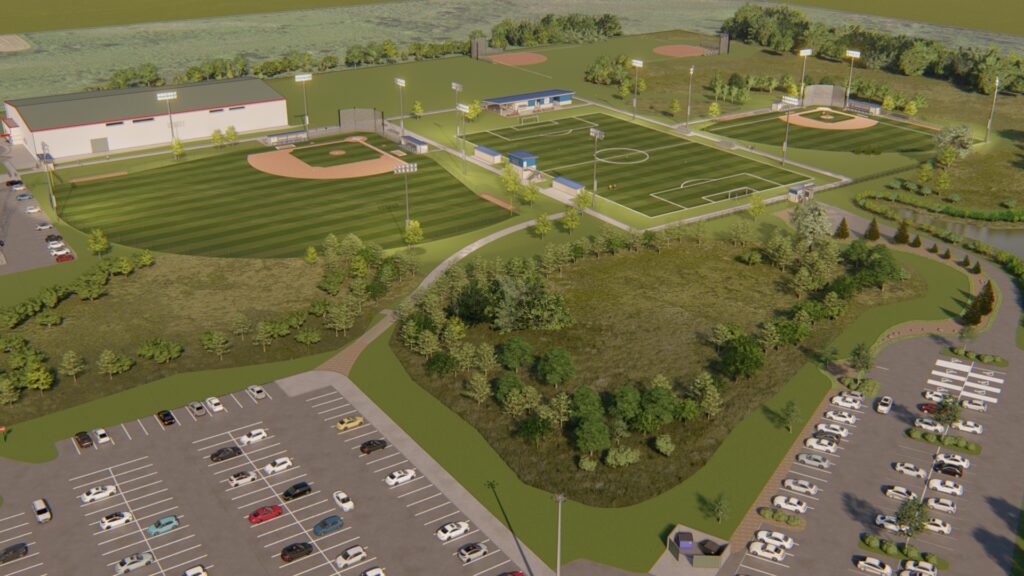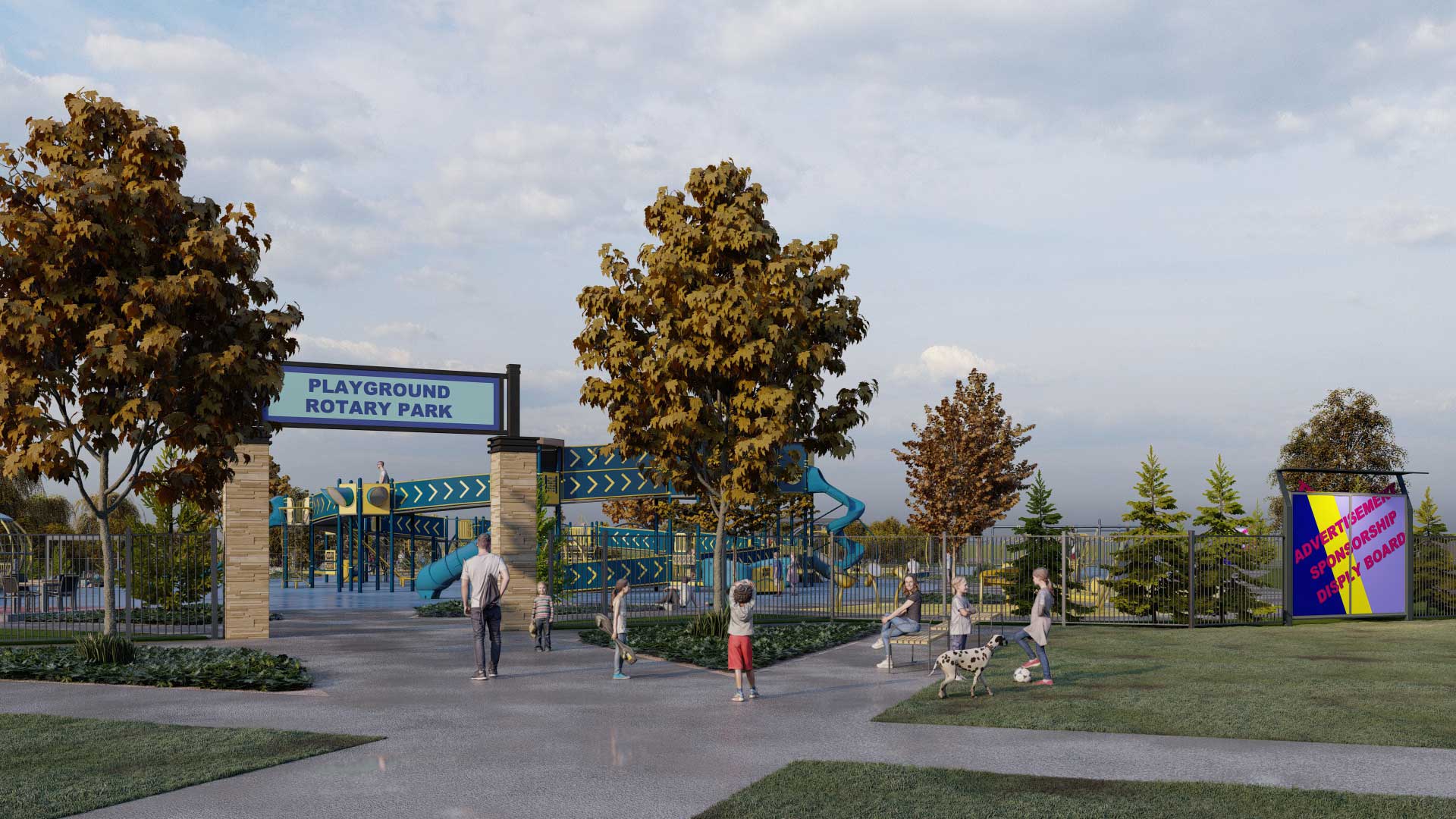By Luke Haas, PLA, ASLA, Vice President, Director of Landscape Architecture
At Harwood, we’ve had the opportunity to work on a variety of outdoor spaces from small daycare playground improvements to outdoor exercise yards in maximum-security prisons, each with their own challenges and rewards. Across this broad range of project types, a few common threads exist: advances in outdoor amenities, changing design trends and the importance of integrated design.
Advancement in Outdoor Amenities
Significant improvements have been made to playgrounds and outdoor amenities in recent years, and we’re excited to be part of this ongoing evolution. From inclusive play equipment to sensory installations, playgrounds have come a long way from just swings and slides.
The variety of outdoor play equipment has grown tremendously to meet these needs. This includes accessible equipment such as wheelchair accessible swing sets, along with natural play equipment like those made from black locust logs. Kids and adults alike have an affinity for nature; natural play equipment enables users to play while also engaging in nature.
In addition to the structures for exercise and play, playground manufacturers are also offering equipment that taps into the sensory and creative side of the users. These pieces of equipment afford the users the opportunity to play music, create art and leverage technology to communicate throughout the space.

Importance of Inclusive Design
A successful outdoor space caters to diverse groups of individuals. We work with playground manufacturers specifying the proper equipment to complement the site design, offering a positive experience for all users.
In addition to the physical structures, another very important aspect of outdoor play space is design for all ages and abilities. A truly successful and enjoyable play space must be intergenerational, catering to children, parents, grandparents, guardians and siblings. This includes facilities that everyone can enjoy, from a shaded seating area to outdoor fitness equipment. A multitude of experiences, in addition to the play structures, make for a successful play space that welcomes all users.
A Holistic Approach to Design
With all of the exciting advancements to outdoor play equipment, equally important as the equipment itself is the design of the site. Thoughtful design of the areas surrounding the play space can take the excitement and enjoyment for all users to the next level. While most parks offer great inclusive equipment, engaging the site enables you to create a unique, memorable setting that can’t be manufactured. The site design should create excitement from the very first moment users step foot on the site. Providing a safe circulation pattern and designated entry can be impactful for the users, building the excitement to be in the space. Unique amenities such as paths, vegetation, framed views, seating areas and separate quiet areas complement the play equipment and enhance the users’ overall experience.
One of our major design philosophies is that a site needs to be designed and developed as a whole rather than independently. While budgets often impact this holistic design approach, the best results are achieved when a team of professionals – designers, architects, engineers, landscape architects, suppliers and builders – work together, each contributing their unique expertise and maximizing each other’s strengths.

The Shift to Educational Green Spaces
We’re seeing a shift in design, moving away from expansive asphalt play areas to softer, educational green spaces. As a landscape architect, the strides school districts are currently undertaking to remove unused asphalt and replace with green spaces is refreshing. The new green spaces offer students another place to unwind, take a mental break, and even continue learning in an outdoor setting.
Outdoor play spaces have come far beyond the conventional swing sets and slides, now celebrating diversity and fostering an even greater sense of creativity. They’ve become spaces of learning, exploration, and engagement, and continue to evolve with the industry’s understanding of play, inclusivity, and sustainability. We’re eager to see and shape what’s next in this exciting and impactful space.


Luke Haas, PLA, ASLA, Vice President, Director of Landscape Architecture
